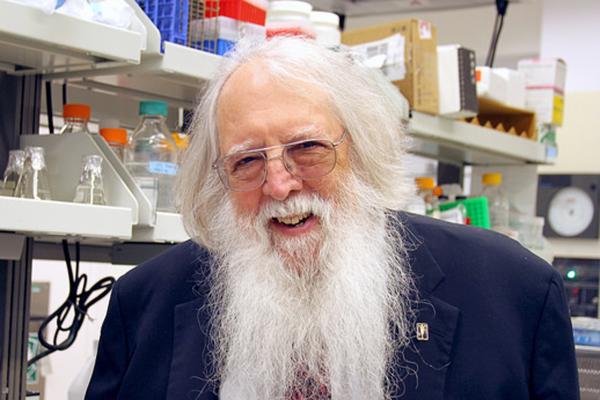Roy Curtiss III was the director of the Centers for Infectious Diseases and Vaccinology and Microbial Genetic Engineering in the Biodesign Institute and professor in the School of Life Sciences at Arizona State University.
His most recent emphasis has been the design and construction of cyanobacterial strains to both maximize production of biofuels and biofuel precursors and to possess genetically controlled means to facilitate product recovery in an energy efficient manner. More specifically this includes:
- optimizing the expression of genes encoding enzymes needed for free fatty acid (FFA) production
- over expressing these genes by encoding them on multicopy plasmids stabilized by balanced-lethal technologies
- eliminating genes encoding enzymes for competing pathways and reduction of genome size by eliminating non-essential genes and operons
- engineering strains and culture conditions to inhibit, if not eliminate, growth of contaminating heterotrophs that might consume produced FFAs
- developing means to capture FFAs concomitant with production and secretion
- developing a process for genetically controlled induction of autoaggregation to concentrate biomass without need for filtration and/or centrifugation
- developing a method for liberating membrane lipids at high temperatures and high density in the dark
- developing means for biocontainment such that any escaping genetically modified cyanobacteria could not survive in the environment
Another major endeavor is directed at developing live vaccines to reduce morbidity and mortality caused by infectious disease agents of fish, poultry, swine, cattle, and humans. His research group designs, constructs and evaluates recombinant genetically modified Salmonella vaccine strains as immunizing vectors to express and deliver protective antigens/epitopes representing virulence determinants from other pathogens and/or to deliver novel DNA vaccines encoding protective antigens/epitopes specified by genetic information from various pathogens for expression by the immunized individual. These recombinant. attenuated Salmonella vaccines (RASVs) are administered intranasally or orally to home to the nasal-, bronchial-, and/or gut-associated lymphoid tissues and thus induce mucosal, humoral, and cellular immunities and confer protective immunity to bacterial, viral and parasite infectious disease agents infecting agriculturally important animals and humans.
Current endeavors are directed at developing vaccines to prevent infections by: Streptococcus pneumoniae, Mycobacterium tuberculosis, Clostridium perfringens, Yersinia pestis, enteric pathogens (some of which cause systemic disease) such as Salmonella, Escherichia, Shigella, Camylobacter jejuni, Edwardsiella ictaluri and Yersinia, Listeria monocytogenes, influenza viruses (human and avian), papilloma virus, Giardia, Eimeria species and Taenia solium. This research has led to an increasing interest in the ecological distribution of pathogens and their transmission and interaction with animal hosts to exert evolutionary pressures. Since much of host resistance to infection is dependent on innate and acquired immunity, many of these research efforts, especially in optimizing vaccines for maximal induction of immune protection, focus on immunological understanding of all aspects of host defense.
He is a member of the National Academy of Sciences and Fellow of the American Academy of Microbiology, the American Association for the Advancement of Science, the St. Louis Academy of Sciences and the Arizona Arts, Science and Technology Academy.


